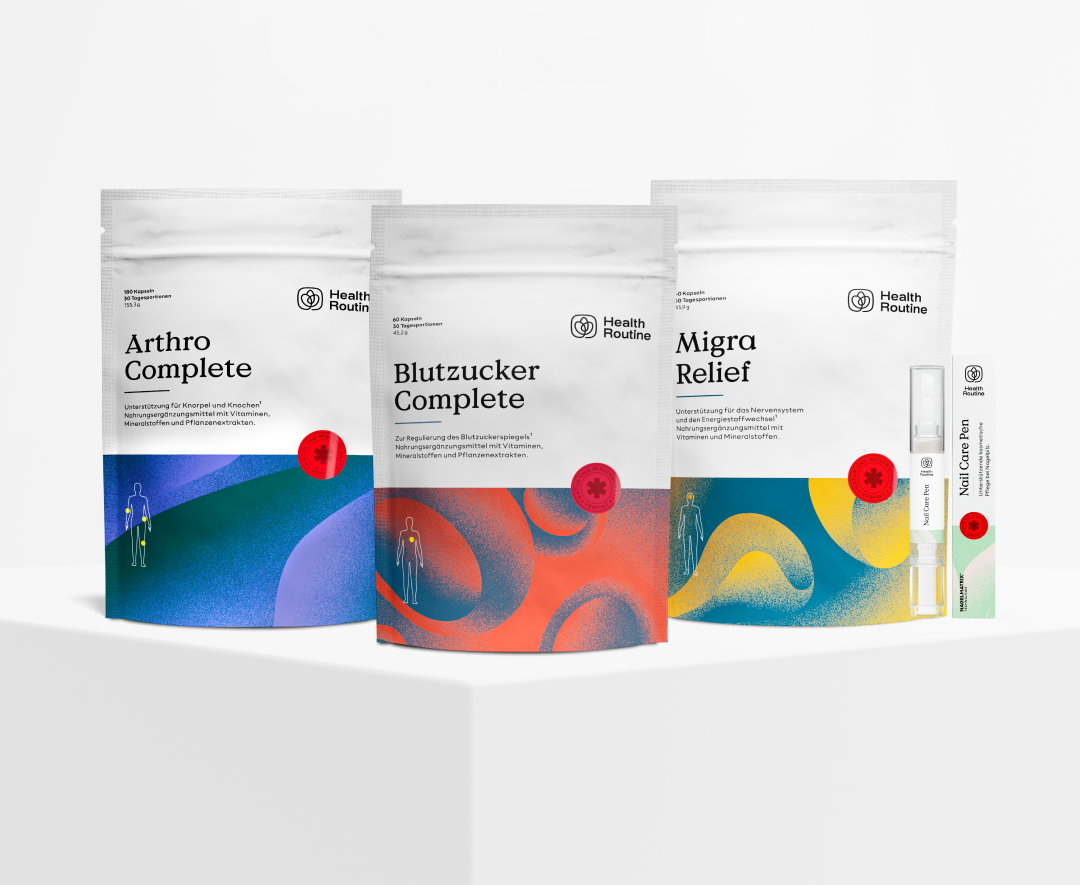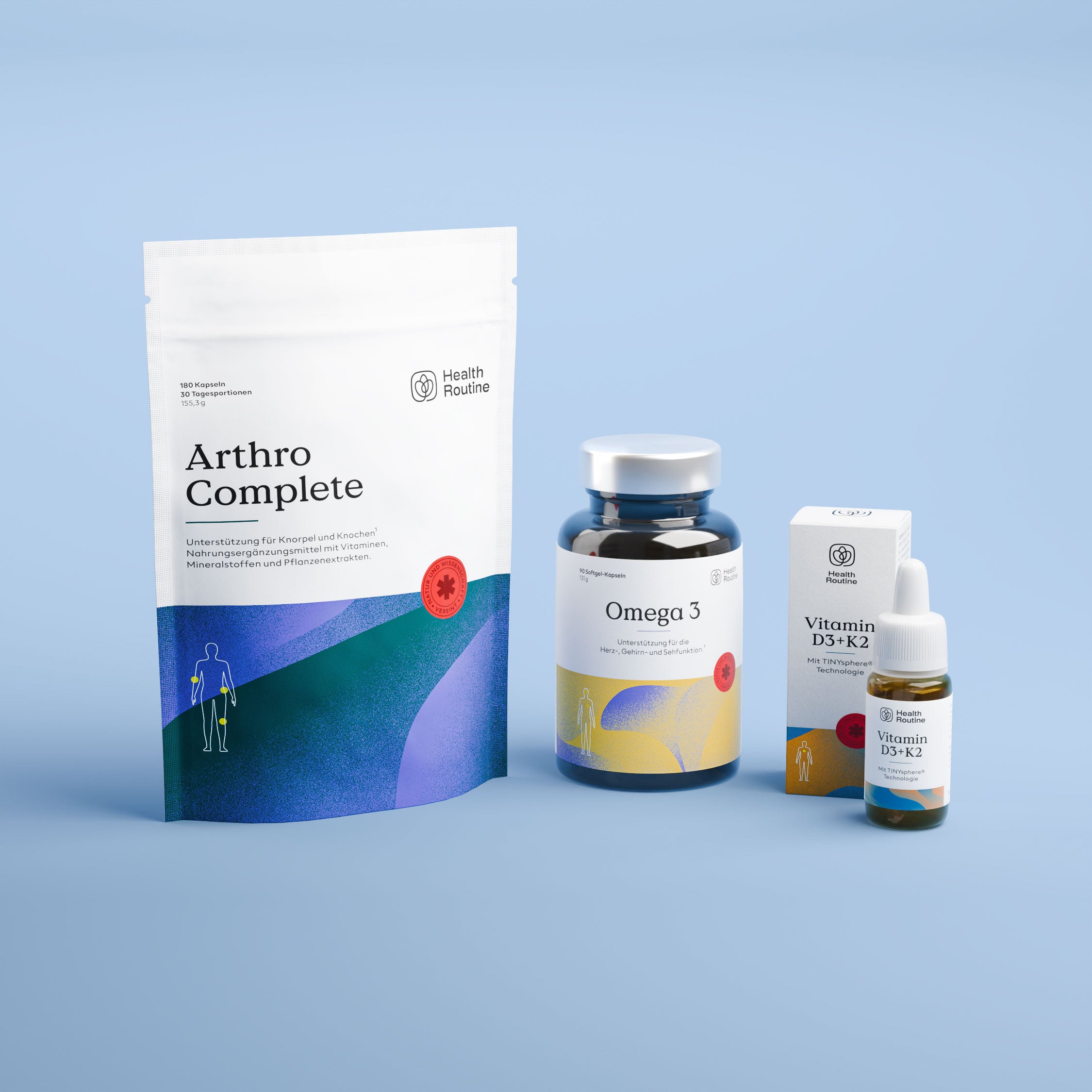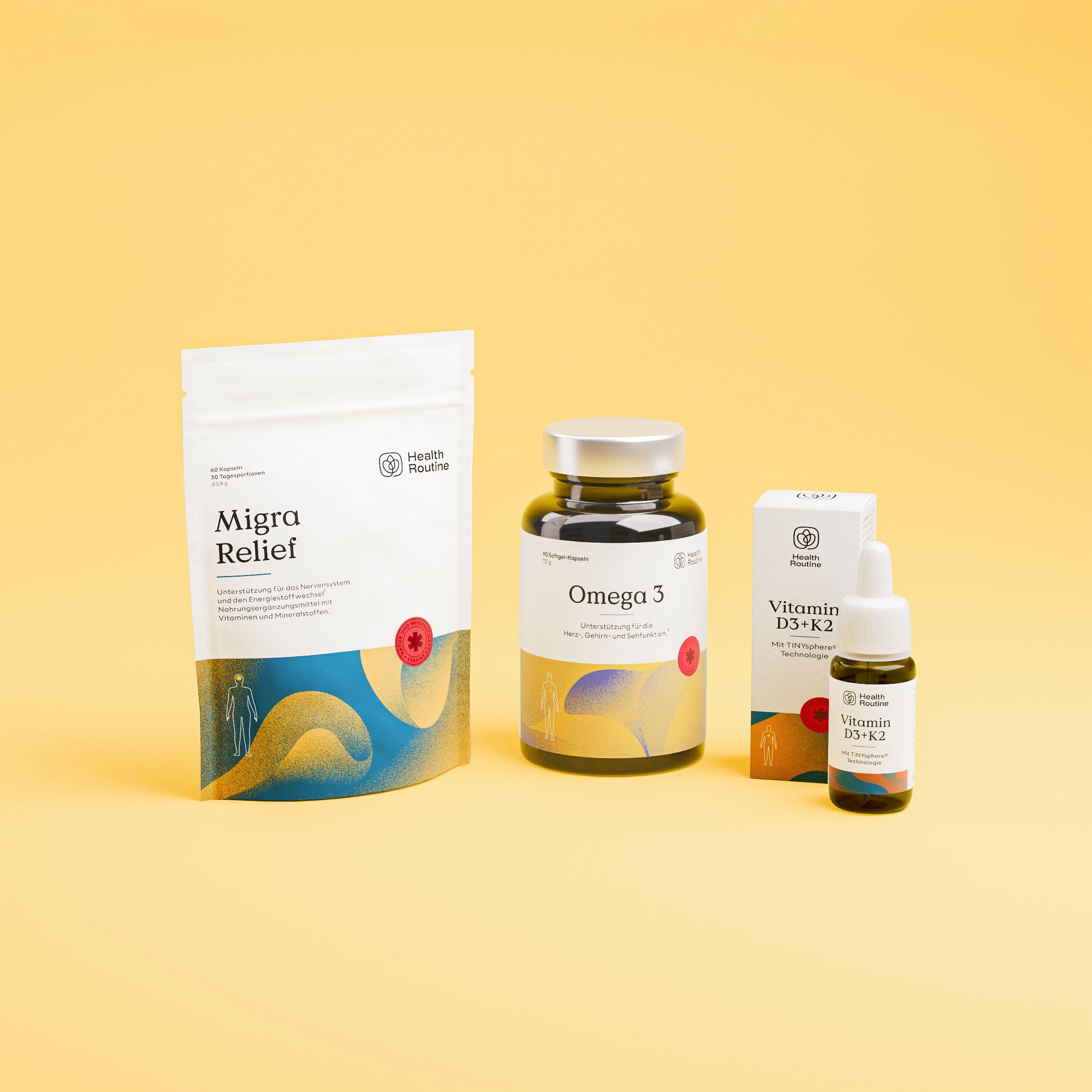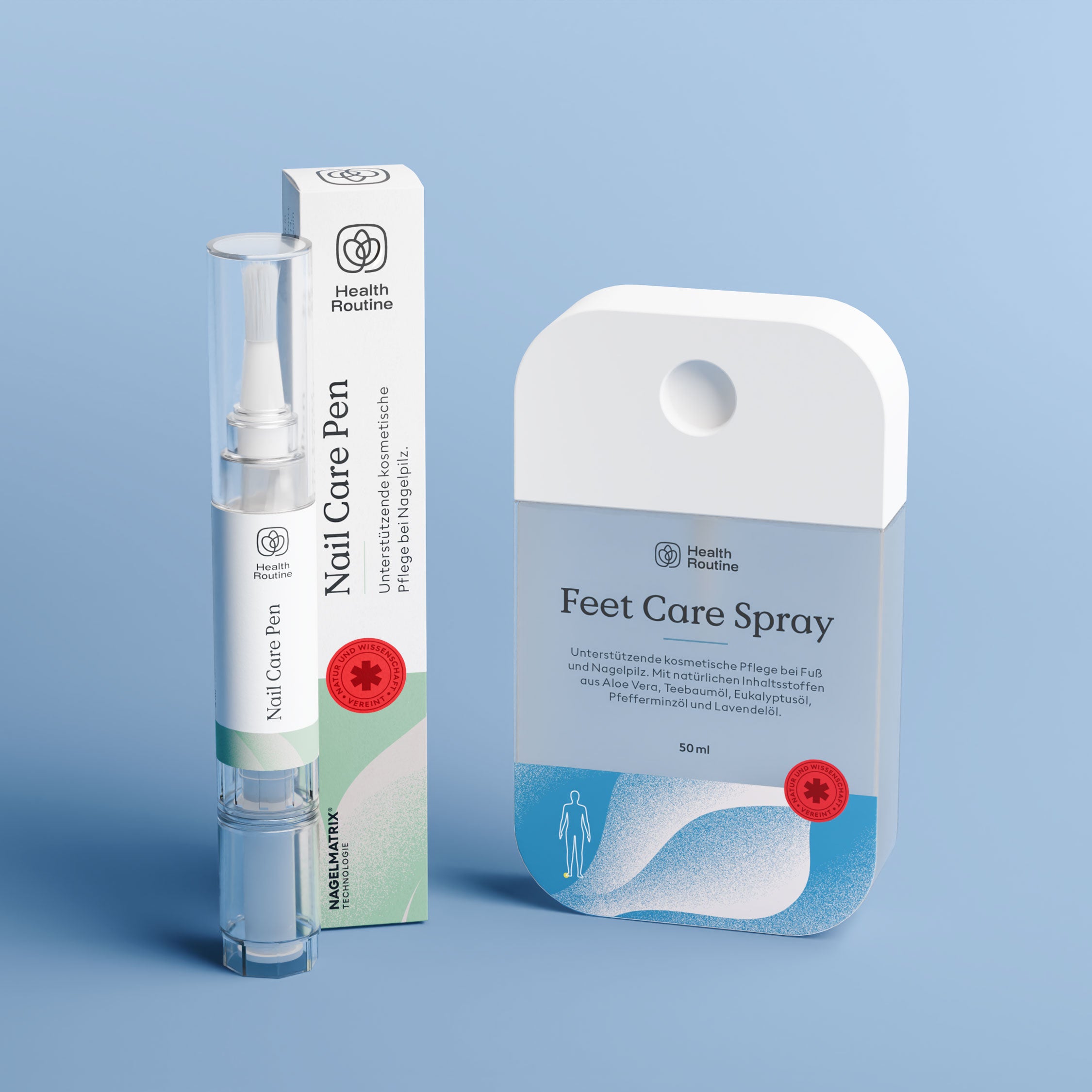The most important things at a glance:
-
Nail detachment can be caused by external stress, care errors or health reasons.
-
This guide explains the differences between onycholysis (partial detachment) and onychomadesis (complete loss).
-
You will learn which care measures can be helpful and when medical advice is necessary.
What does nail detachment mean?
In nail detachment, the nail plate detaches from the nail bed either partially (onycholysis) or completely (onychomadesis). Depending on the cause, this can be painless or accompanied by signs of inflammation.
In many cases the changes are temporary – early assessment and appropriate care are important.
Causes of onychomadesis at a glance
Before we delve deeper into the topic of nail health, let's first look at the various causes of onychomadesis . This medical term refers to the complete loss of a nail , whether on a finger or toe.
In contrast, onycholysis occurs when the nail partially detaches from the nail bed but does not completely fall off. It is essential to understand the causes in order to take effective preventative measures and, if necessary, develop the appropriate treatment strategy.
How does partial nail detachment occur?
1. Nail diseases
-
Onychomycosis: This condition, also known as nail fungus, is caused by fungi and can lead to nail detachment. It is important to detect and treat it early to avoid further complications.
- Onycholysis: In this condition, the nail separates from the nail bed, often due to skin conditions such as psoriasis. Early diagnosis and treatment can help save the nail and relieve symptoms.
2. External influences
-
Trauma: A bump or blow to the nail can cause the nail plate to detach or the nail to fall off. In such cases, it is important to protect the nail and seek medical advice if necessary.
- Chemical exposure: Exposure to harsh chemicals can weaken nails and cause them to peel. It's advisable to wear protective gloves and take good care of your nails when handling chemicals.
3. Systemic diseases
-
Thyroid disorders: Thyroid problems can lead to onycholysis, in which the nail separates from the nail bed. Appropriate treatment of the underlying condition is crucial in such cases.
- Iron deficiency: A lack of iron in the body can affect nail health and cause fingernails or toenails to loosen. A balanced diet and, if necessary, iron supplements can help.
4. Inadequate nail care
-
Inappropriate manicure/pedicure : Overly aggressive filing or cutting can damage the nail structure and lead to detachment. Gentle and careful nail care is therefore essential.
- Humidity: Excessive exposure to moisture can soften nails and make them more susceptible to infection, which can lead to nail detachment. It's important to keep hands and feet dry and wear protective gloves if necessary.
How does complete nail detachment occur?
1. Nail diseases
-
Onychomadesis: A serious condition in which the nail detaches completely from the nail bed , often as a result of a viral infection or a serious systemic disease. Systemic diseases are diseases that can affect multiple organs or the entire body, such as diabetes or rheumatoid arthritis.
- Paronychia: In some cases, an infection of the nail bed can become so severe that the nail detaches completely. This infection can be triggered by various factors, such as ingrown nails or bacteria, and often requires medical treatment.
2. Traumatic events
-
Hand, foot, and mouth disease: This viral infection, which occurs primarily in children, carries the risk of complete detachment of fingernails and toenails, which can lead to discomfort and possible complications.
- Severe injuries: A severe impact, accident, or bruise can compromise the structure of the nail and cause the nail to fall off completely, requiring careful care and possibly medical intervention.
3. Chemical influences
-
Harsh chemicals: Contact with harsh chemicals, whether in a professional environment or through improper use, can weaken and damage nails, which can lead to complete detachment.
- Drug reactions: Certain medications, especially some chemotherapy drugs and antifungals, can cause nail detachment as a side effect, which may require medication adjustment.
4. Systemic diseases
-
Severe systemic diseases: Diseases such as psoriasis, thyroid disease or autoimmune diseases can have far-reaching effects on the body and lead to complete nail detachment.
- Malnutrition: Vitamins are important for nails . A deficiency can impair nail health, weaken the structure of the nails, and thus lead to nail detachment.
Treating a nail detachment: What really helps?
If you notice a fingernail or toenail becoming loose or falling off , it can be an unsettling experience. But don't worry, there are effective treatment options that can help you restore nail health.
Let us now look at the treatment options for partial and complete nail detachments separately to give a clear overview.
Partial nail detachment
Onycholysis treatment: Here, it is important to treat the underlying cause. This could be treating a thyroid disorder or a fungal infection.
In addition, the use of special serums can help regenerate the nail bed . It is also advisable to protect the nail from further trauma and maintain good nail hygiene .
Toenail comes off, what to do?: In this case, it is advisable to keep the affected area clean and dry to avoid further infection.
Wearing comfortable shoes and avoiding pressure on the nail can also help. If signs of infection appear, consult a doctor.
Complete nail detachment
Onychomadesis Treatment: In case of complete nail detachment, it is important to consult a doctor who can suggest appropriate treatment to regrow the nail.
The doctor may prescribe medication and provide advice on caring for the affected area. It is crucial to follow the doctor's instructions to avoid complications.
Regenerating the nail bed: Special care can help strengthen and protect the nail bed to promote healthy nail regrowth .
The use of moisturizing creams and protective dressings can also be helpful. A balanced diet and good hydration support the healing process.
The insider tip for strong nails: Trust in the support of the Nail Growth Serum
Do you dream of well-groomed nails with a natural shine? The Nail Growth Serum from Health Routine could be your new best friend. This serum is more than just a nail oil; it's your personal assistant when it comes to promoting nail growth and improving the quality of your nails.
The serum combines powerful active ingredients from nature, including
-
Almond oil , which provides moisture and can prevent structural damage caused by UV radiation,
- Jojoba oil , which strengthens the nails and cares for the cuticles,
- and citrus oil , which acts like a key and opens the nail at the cellular level to allow the nourishing ingredients to work deeply.
Expert tip: These oils, along with coconut oil, olive oil, vitamin E and biotin, work hand in hand to strengthen brittle nails, promote nail growth and restore nails' natural shine.
For optimal results and to allow the nail to grow back , you should also pay attention to a balanced diet rich in
- Calcium,
- Vitamin A,
- Biotin
- as well as vitamins B, C and E.
These nutrients are crucial for healthy nail growth and, when combined with the Nail Growth Serum, can produce impressive results.
With a simple application 2 to 3 times daily, you can pave the way to healthy and strong nails . Thanks to the practical brush applicator, application takes just a few minutes.
But before you begin, make sure your nails are well prepared:
- Trim cracked and split nails and file the edges thoroughly. A glass file with microfine grit is ideal for this.
- After washing your hands, apply the serum and leave it on for five to ten minutes.
So, what are you waiting for? Trust in the support of the Nail Growth Serum and look forward to well-groomed nails that leave a great first impression.
Crushing injury: What happens when the nail separates from the nail bed?
A crushed nail can be a painful experience, often caused by accidents at home or at work. When a fingernail comes loose after a crush, it can be a shock at first.
But don't worry, there are effective ways to deal with this situation. Here's what a crush injury is and what treatment options are available.
-
Cooling: To reduce swelling, you should immediately cool the injured area. This also helps relieve pain. A cold pack or cold cloth can be used for this purpose, but direct contact with ice should be avoided to prevent skin damage.
-
Protection: If the nail falls off after a bruise, it's important to protect the area. This can help prevent infection. A sterile bandage can be helpful in this regard, protecting the affected area from dirt and bacteria.
- Medical advice: In case of serious injuries, you should consult a doctor who can recommend appropriate treatment. This may include prescription medication, a tetanus vaccination, or other specific measures, depending on the severity and nature of the injury.
Nail fungus: A common trigger for nail detachment
Nail fungus is a common condition that often leads to nail detachment. This infection can affect the nail to the point where it separates from the nail bed , which can be both uncomfortable and unsightly.
Fortunately, there are several treatment options that can help you overcome this challenge. Let's take a look at the available treatments.
-
Antifungal creams and oils/serums: These agents can be applied directly to the affected nail to combat the fungus.
-
Oral medications: In more severe cases, doctors may prescribe oral medications that fight the nail fungus from within.
- Laser treatment: A modern method of treating nail fungus that uses a laser to destroy the fungus without harming the surrounding nail.
Nail psoriasis and its effects on the nails
Nail psoriasis is a chronic condition that can affect not only the skin but also the nails. The condition can cause thickening and discoloration of the nails, which in some cases can ultimately lead to nail detachment .
Treating nail psoriasis is challenging, but there are several methods that can help.
Here are some of the common treatment options for nail psoriasis:
-
Topical steroids: These medications are applied directly to the affected areas to reduce inflammation and relieve the symptoms of nail psoriasis.
-
Light therapy: This method uses UV light to inhibit inflammatory processes and improve the symptoms of nail psoriasis.
- Systemic medications: These medications work throughout the body and modulate the immune system to control the overreaction that causes psoriasis.
How do you recognize onychomadesis? Characteristics and signs
Onychomadesis is a serious form of nail disease , so it's crucial to recognize the symptoms early on. This allows for timely intervention and potentially preventing the nail from becoming detached.
Below are some characteristic features and symptoms of onychomadesis:
-
Nail discoloration: Yellowish or brownish nail discoloration may indicate the beginning of detachment.
-
Change in nail structure: A nail that becomes thicker or more brittle can be an indicator of onychomadesis.
-
Pain: Discomfort in the nail bed area can be an early symptom of the disease.
- Complete detachment: In advanced stages, the nail may completely detach from the nail bed, which is a clear sign of onychomadesis.
Conclusion
With this guide at your side, you are now well equipped to confidently face the diverse challenges of nail problems.
Your nails are a reflection of your health and therefore deserve special attention and care. So don't hesitate to take nail health seriously and implement the tips and advice listed here.
Because strong, healthy nails are not only a symbol of your physical well-being, but also a real booster for your self-confidence.
Prepare to impress with strengthened, shiny nails and feel good about the appearance of your hands at all times!
FAQ
Is it possible that a toenail will not grow back?
Yes, in rare cases, a toenail may fail to grow back. This can happen due to severe injury or infection that has caused irreparable damage to the nail bed.
In such cases, it is advisable to consult a specialist who can offer individual advice and treatment options to achieve the best possible outcome.
How long does it take for a nail to grow back?
The time it takes for a nail to grow back can vary depending on various factors such as individual health, diet and how well nail care is practiced.
Generally, it takes about 6 months for fingernails and up to 12-18 months for toenails to fully regrow. A balanced diet and proper care can support and promote this process.
🌿 Discover more guides from Health Routine now:
Your medical advice
Our products are not intended to diagnose, treat, cure, or prevent any disease. The information provided in this article is for informational purposes only and is not intended as a substitute for advice from your physician or other healthcare professional.
Furthermore, our products are not a substitute for medications or other treatments prescribed by your doctor or healthcare provider. Regardless of the due care taken, no liability or warranty is assumed for the
- Accuracy,
- topicality,
- completeness
- and availability of the information provided.
No legal claims can be made for any damages potentially resulting from the use and application of this information. Liability claims of any kind are excluded.






